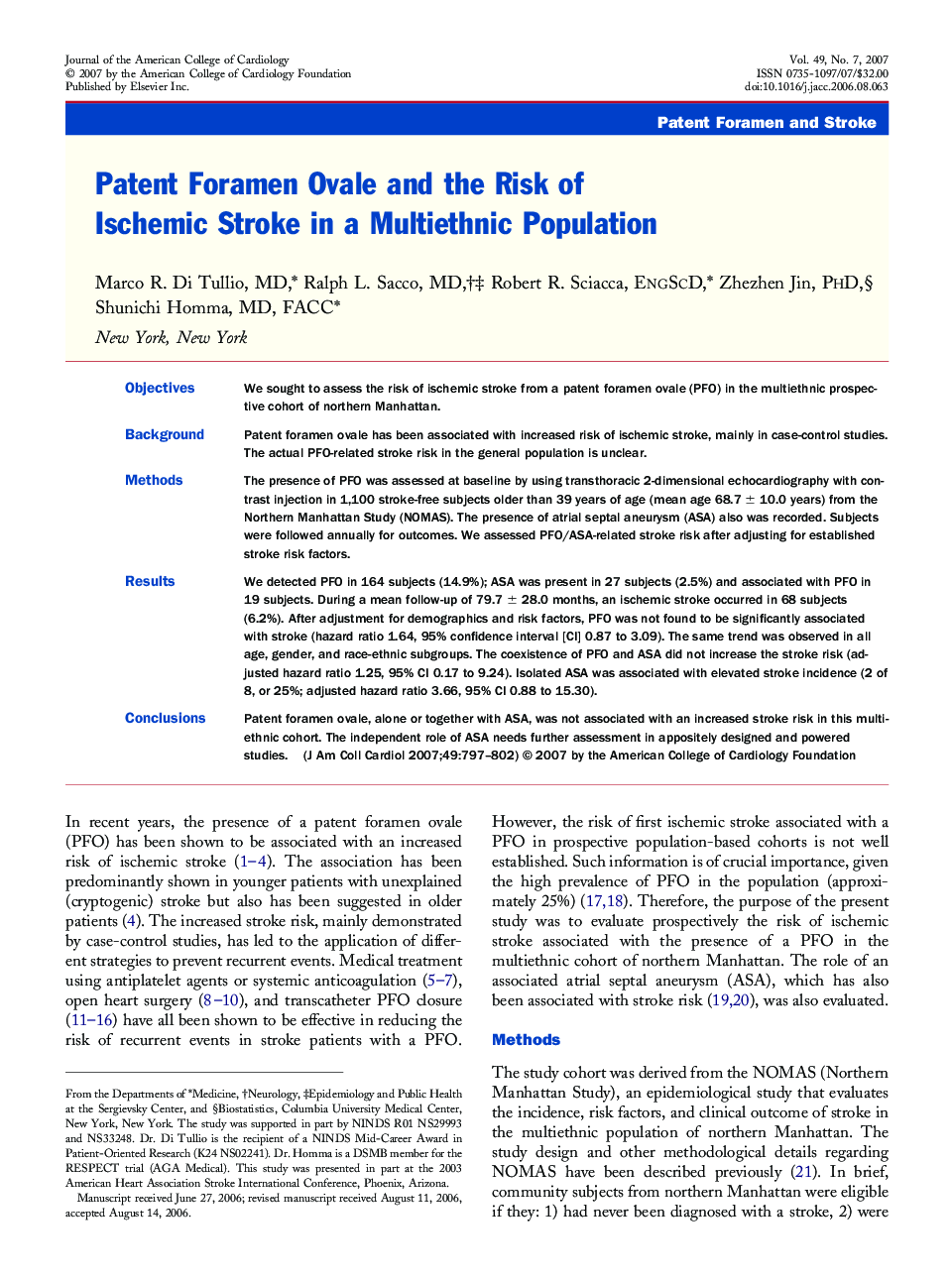| Article ID | Journal | Published Year | Pages | File Type |
|---|---|---|---|---|
| 2955203 | Journal of the American College of Cardiology | 2007 | 6 Pages |
ObjectivesWe sought to assess the risk of ischemic stroke from a patent foramen ovale (PFO) in the multiethnic prospective cohort of northern Manhattan.BackgroundPatent foramen ovale has been associated with increased risk of ischemic stroke, mainly in case-control studies. The actual PFO-related stroke risk in the general population is unclear.MethodsThe presence of PFO was assessed at baseline by using transthoracic 2-dimensional echocardiography with contrast injection in 1,100 stroke-free subjects older than 39 years of age (mean age 68.7 ± 10.0 years) from the Northern Manhattan Study (NOMAS). The presence of atrial septal aneurysm (ASA) also was recorded. Subjects were followed annually for outcomes. We assessed PFO/ASA-related stroke risk after adjusting for established stroke risk factors.ResultsWe detected PFO in 164 subjects (14.9%); ASA was present in 27 subjects (2.5%) and associated with PFO in 19 subjects. During a mean follow-up of 79.7 ± 28.0 months, an ischemic stroke occurred in 68 subjects (6.2%). After adjustment for demographics and risk factors, PFO was not found to be significantly associated with stroke (hazard ratio 1.64, 95% confidence interval [CI] 0.87 to 3.09). The same trend was observed in all age, gender, and race-ethnic subgroups. The coexistence of PFO and ASA did not increase the stroke risk (adjusted hazard ratio 1.25, 95% CI 0.17 to 9.24). Isolated ASA was associated with elevated stroke incidence (2 of 8, or 25%; adjusted hazard ratio 3.66, 95% CI 0.88 to 15.30).ConclusionsPatent foramen ovale, alone or together with ASA, was not associated with an increased stroke risk in this multiethnic cohort. The independent role of ASA needs further assessment in appositely designed and powered studies.
